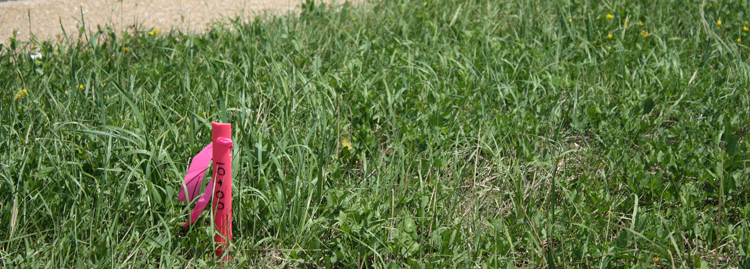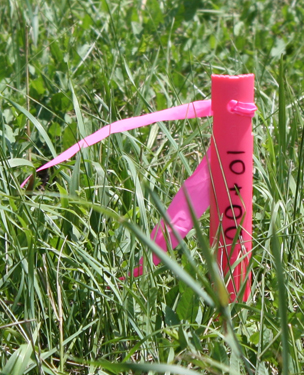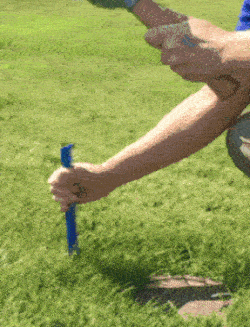How Plastic Survey Stakes Give Surveyors an Efficient Alternative to Wood Stakes

When budgets and project deadlines are tight, efficiency becomes critical on any construction site. But while most new tools and solutions focus on improving the building process itself, there are huge opportunities to save time and do more accurate work even before you break ground.
Construction Staking, otherwise known as the Site Layout Survey is a crucial step in the construction planning process, relying on surveyors to mark critical points throughout the site to give builders a precise frame of reference.
While it may seem like an unremarkable part of site development, the surveyor’s role is a vital one as it’s up to them to take the first step in bringing the architect’s vision to life. Any missteps in this phase of site development can cause significant delays in work––draining budgets and adding pressure to the project schedules when deadlines loom close.
 What is Construction Staking?
What is Construction Staking?
For a basic refresher on the staking process, it typically breaks down into one of two categories:
1. Rough Grade Staking
Rough Grade Staking is the more general of the two, used to map the locations and relative final grade elevations of improvements on site. It’s utilized most often when developing general building outlines, slopes, parking lots, roads or any other application when contractors need to grade and prepare a site for work.
2. Site Layout Staking
Site Layout Staking marks the precise locations of the first phases of construction such as underground utilities, building corners, interior grid lines, area drains, curbs, gutters and building walls.
How can surveyors improve their construction staking procedure?
Most experienced surveyors aren’t limited by their ability, but by the tools they use to give builders a clear plan of action.
The primary marking tool in this case is the survey stake––markers that range in size and color used to measure everything from alignment to grade and slope. After placing survey stakes at precise locations around the site, surveyors can step aside and let builders begin the next phase of construction.
But while just about every other part of the construction process has been improved with newer, more efficient technology and equipment, survey stakes haven’t changed significantly for decades––until now.
Traditional wooden survey stakes versus today’s plastic survey stakes
Most surveyors still use traditional wooden survey stakes to mark out their site layouts, and while these markers are pretty good at what they do, newer alternatives present some important advantages, especially when it comes to efficiency.
Weight & size
Compared to wood, plastic stakes weigh far less and take up about 75% less storage space. A box of 200, for instance, is small and light enough to fit under your arm.
 Durability & flexibility
Durability & flexibility
Unlike rigid wood stakes which buckle and break when stepped on or run over with equipment, plastic survey stakes bend back to their original shape and position.
Visibility
Depending on the project, builders may need more information than position. While it’s possible to write directly on wood, plastic stakes are designed specifically to give surveyors a flat surface to write on, as well as a 1 cm hole near the top of the stake for rope or flagging.
In addition to this, plastic stakes are manufactured with bright, APWA colors which give far higher contrast than painted wood stakes.
Price
While plastic stakes cost slightly more, they’re far more reusable, than wooden stakes which deteriorate after being exposed to outdoor elements.